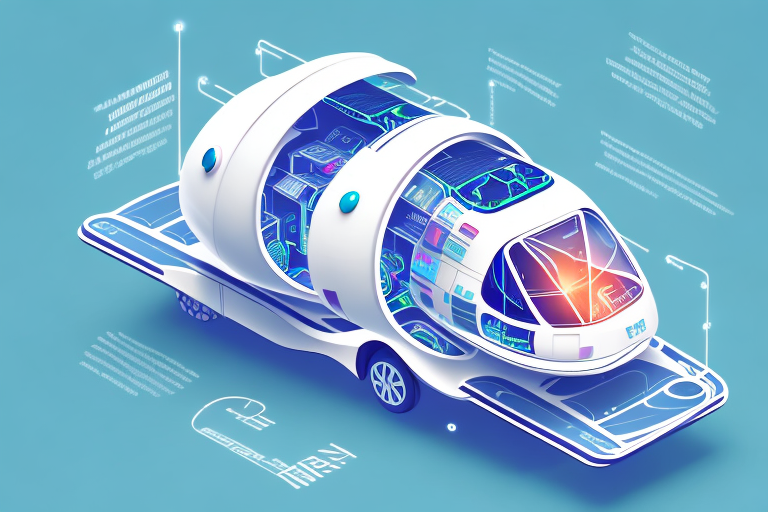What are Pod Deliveries and How Do They Work?
Pod deliveries represent an innovative approach to the logistics and delivery industry, leveraging autonomous technology to transport goods directly to consumers. These systems utilize small, automated vehicles—commonly referred to as pods or delivery robots—that navigate through pre-programmed routes from warehouses or distribution centers to customers' doorsteps. Advanced prototypes may incorporate drones or walking robots to handle package transportation across varied terrains.
The core advantage of pod deliveries lies in their ability to operate continuously without the need for human drivers, enabling 24/7 delivery services. This autonomy not only accelerates delivery times but also reduces operational costs associated with labor. Additionally, pods can optimize delivery routes using real-time data, enhancing efficiency and minimizing delays.
However, pod deliveries face challenges, including navigating complex urban environments with obstacles like crowded streets and narrow pathways. Safety and security concerns, such as the risk of package theft or damage, also need to be addressed to ensure reliable service.
Advantages of Pod Deliveries Over Traditional Delivery Methods
Pod deliveries offer several key benefits compared to conventional delivery systems:
- 24/7 Operation: Unlike human drivers restricted by working hours, pods can deliver packages around the clock, catering to customers with diverse schedules.
- Enhanced Efficiency: Autonomous operations eliminate delays caused by traffic or human fatigue, ensuring faster and more reliable deliveries.
- Cost Savings: Reduced reliance on human labor and the use of electric power lower operational expenses, allowing businesses to allocate resources more effectively.
- Environmental Sustainability: Pods typically have a smaller carbon footprint compared to traditional delivery vans or trucks, contributing to reduced greenhouse gas emissions.
- Traffic Congestion Mitigation: By utilizing smaller vehicles, pod deliveries help decrease the number of large delivery trucks on the road, alleviating urban traffic congestion.
These advantages collectively enhance customer satisfaction and retention by providing timely, cost-effective, and environmentally friendly delivery solutions.
How Pod Deliveries Improve Efficiency and Reduce Delivery Costs
Pod deliveries streamline the logistics process in multiple ways:
- Labor Reduction: Automation minimizes the need for human drivers, significantly cutting labor costs and reducing the potential for human error.
- Optimized Routing: Advanced algorithms enable pods to determine the most efficient delivery routes, decreasing delivery times and increasing the number of packages delivered per day.
- Energy Efficiency: Electric-powered pods consume less energy compared to fuel-dependent delivery vehicles, leading to lower operating costs and reduced environmental impact.
- Real-Time Tracking: Integrated tracking systems provide customers with up-to-date information on their deliveries, enhancing transparency and trust.
According to a Statista report, autonomous delivery systems can reduce delivery costs by up to 30%, highlighting their potential to transform the delivery landscape.
The Environmental Impact of Pod Deliveries and Their Contribution to Sustainability
Pod deliveries contribute significantly to sustainable transportation by:
- Reducing Carbon Emissions: Electric-powered pods produce zero emissions during operation, helping to lower the overall carbon footprint of delivery services.
- Minimizing Traffic Congestion: Fewer large delivery vehicles on the road lead to reduced traffic, which in turn decreases air pollution and improves urban air quality.
- Lowering Energy Consumption: Pods require less energy per delivery compared to traditional vehicles, promoting more sustainable energy usage.
- Reducing Packaging Waste: Reusable pod designs can lessen the dependency on single-use packaging materials, further supporting environmental sustainability.
A study by the Environmental Protection Agency (EPA) indicates that shifting to electric delivery systems like pods can significantly mitigate the transportation sector's impact on climate change.
Exploring the Technology Behind Pod Deliveries: Automation, Robotics, and Drones
Pod deliveries are powered by a suite of advanced technologies:
- Automation: Automated systems manage navigation, scheduling, and delivery operations without human intervention.
- Robotics: Delivery robots handle the physical transportation of packages, utilizing sensors and AI to navigate environments safely.
- Drones: In some cases, drones are integrated to handle deliveries over longer distances or challenging terrains, expanding the reach of pod delivery systems.
Continuous advancements in artificial intelligence and machine learning enable pods to improve their routing algorithms and obstacle detection capabilities. Enhanced battery technologies also extend the operational range of both pods and drones, making them more viable for widespread adoption.
Research from MIT's Robotics Lab showcases how AI-driven pods can optimize delivery routes in real-time, further boosting efficiency and reducing delivery times.
Case Studies: Successful Implementation of Pod Delivery Systems
Several companies have pioneered the deployment of pod delivery systems with impressive results:
- Amazon Scout: Amazon's Scout program utilizes small, six-wheeled robots to deliver packages in select neighborhoods, demonstrating reliable performance in controlled environments.
- Starship Technologies: Partnering with various universities and businesses, Starship's autonomous robots efficiently handle on-campus deliveries, showcasing adaptability across different settings.
- Domino's Pizza: Implementing delivery robots equipped with warming compartments, Domino's ensures pizzas remain hot and fresh during autonomous transport to customers.
These case studies highlight the scalability and versatility of pod delivery systems across diverse industries, affirming their potential to revolutionize the delivery sector.
Challenges and Limitations of Pod Deliveries
Despite their numerous advantages, pod deliveries encounter several obstacles:
- Regulatory Hurdles: Navigating the complex landscape of laws and regulations governing autonomous vehicles can delay deployment and require significant compliance efforts.
- Infrastructure Requirements: Establishing necessary infrastructure, such as charging stations and dedicated lanes, is essential for efficient pod operations but can be costly and time-consuming.
- Public Acceptance: Gaining consumer trust in autonomous delivery systems is crucial. Concerns about safety, reliability, and job displacement need to be addressed through transparent communication and demonstrated performance.
- Limited Cargo Capacity: The smaller size of pods restricts the volume and weight of packages they can carry, making them unsuitable for larger or bulk orders.
Overcoming these challenges requires collaborative efforts between businesses, governments, and communities to create supportive environments for pod delivery technologies.
Comparing Pod Deliveries with Other Emerging Delivery Methods
Pod deliveries are part of a broader movement towards innovative delivery solutions. Here's how they stack up against other emerging methods:
- Autonomous Vehicles: Similar to pod deliveries, autonomous cars aim to eliminate the need for human drivers. However, pods are typically smaller and more specialized for last-mile deliveries, offering greater efficiency in dense urban areas.
- Hyperloop: While the Hyperloop promises ultra-fast transportation for people and goods, it requires substantial infrastructure investment and is primarily suited for long-distance travel rather than local deliveries.
- Underground Tunnels: Utilizing underground tunnels for delivery can reduce surface traffic congestion, but the high costs and logistical challenges of tunnel construction make it less feasible for widespread adoption compared to pods.
Pod deliveries distinguish themselves through their cost-effectiveness, scalability, and environmentally friendly operations, making them a compelling choice for modern delivery needs.
Future of Pod Deliveries: Predictions and Possibilities for the Next Decade
The future of pod deliveries is poised for significant growth and innovation:
- Technological Advancements: Continued improvements in AI, battery life, and robotics will enhance the capabilities and efficiency of pod delivery systems.
- Expanded Adoption: As businesses recognize the benefits, pod deliveries will become more widespread, extending into rural areas and expanding their service offerings.
- Integration with Smart Cities: Pod deliveries will increasingly integrate with smart city infrastructures, utilizing interconnected systems for optimized routing and traffic management.
- Regulatory Evolution: Governments will develop clearer regulations and standards for autonomous delivery systems, facilitating smoother implementation and operation.
Emerging technologies, such as advanced drone integration and enhanced autonomous navigation, will further transform pod deliveries, making them faster, more reliable, and even more sustainable.
Conclusion: Why Pod Deliveries Are the Future of Efficient, Eco-Friendly, and Cost-Effective Delivery Systems
Pod deliveries represent a significant advancement in the logistics and delivery industry, offering a blend of efficiency, cost savings, and environmental benefits that traditional methods struggle to match. By leveraging autonomous technology, businesses can provide faster, more reliable delivery services while reducing operational costs and minimizing their environmental impact.
As technological innovations continue to evolve and regulatory landscapes adapt to accommodate new delivery models, pod deliveries are set to play a pivotal role in the future of global commerce. Embracing these systems will not only enhance customer satisfaction but also contribute to a more sustainable and technologically advanced society.






















